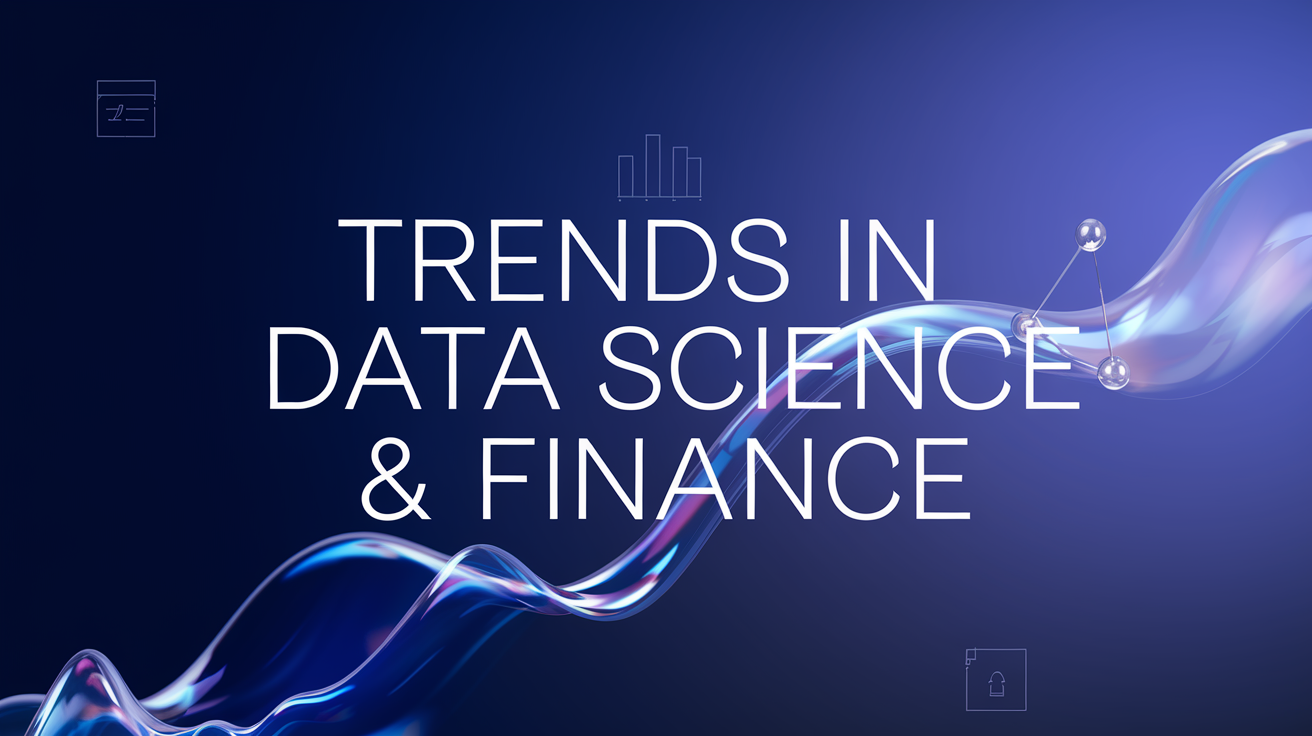
Introduction
In 2025, the financial services industry stands at a pivotal crossroads, shaped by rapid technological transformation and increasing demand for ethical, transparent, and efficient operations. At the center of this evolution is data science, not as a support function, but as a driving force behind smarter decisions, agile risk management, and purposeful growth.
Today’s financial institutions must go beyond the basics of automation and reporting. To remain competitive, they need to proactively anticipate risk, embrace sustainability, harness cloud power for real-time collaboration, and handle data with the utmost integrity.
In this article, we explore four of the most impactful trends redefining the intersection of data science and finance in 2025. Let’s dive in.
1. Predictive Analytics for Smarter Risk Management
Proactively Identifying Financial Risk
In an era of increasing market volatility, traditional risk models no longer cut it. Financial institutions are turning to predictive analytics to uncover potential risks before they manifest. These models analyze everything from historical data and economic indicators to customer behavior in order to forecast issues like credit defaults, liquidity shortages, or even fraud.
For example, banks are now using AI to flag customers who show early signs of financial strain based on subtle behavior patterns, such as reduced account activity or changes in spending categories. This early warning system allows financial providers to proactively offer support, restructure loans, or adjust terms before the customer defaults.
Reinventing Credit Scoring Models
Traditional credit scoring models rely heavily on credit history, which often excludes individuals with limited financial footprints. Predictive analytics is leveling the playing field by integrating alternative data sources such as:
-
Utility and rent payment patterns
-
Mobile phone usage and geo-behavioral data
As a result, fintech lenders are now issuing loans to “credit invisible” populations with remarkable accuracy. These modern credit scoring models not only reduce default risk but also promote financial inclusion.
2. ESG Analytics: Investing with Purpose
Evaluating Environmental, Social, and Governance Factors
Today’s investors care about more than returns, they want their money to make a positive impact. ESG analytics helps financial professionals evaluate the ethical and sustainability metrics of potential investments.
Modern ESG platforms pull from a mix of structured and unstructured data, including:
- Sustainability reports and emissions disclosures
- News sentiment and social media mentions
- Regulatory filings and NGO watchlist
This provides a clearer view of a company’s environmental footprint, workplace practices, diversity metrics, and governance ethics.
Unlocking Sustainable Investment Opportunities
In 2025, sustainability isn't a side initiative, it’s a major growth opportunity. Investors are actively seeking portfolios aligned with green energy, circular economy models, and inclusive governance. Financial firms that integrate ESG analytics can identify high-performing, values-aligned companies early. (TechBullion)
As ESG compliance increasingly affects valuation and risk, data-driven ESG analysis becomes a necessity rather than a nice-to-have.
3. Cloud-Based Financial Analytics for Scalability and Speed
Scaling with the Cloud
Financial institutions are sitting on mountains of data, but without the right infrastructure, that data is useless. Cloud computing platforms such as Snowflake, AWS, and Azure have enabled finance teams to analyze massive datasets at scale with unprecedented flexibility.
From high-frequency trading models to real-time customer behavior analytics, cloud-native solutions empower analysts to:
-
Process terabytes of data in seconds
-
Perform simulations and scenario planning on demand
-
Scale infrastructure up or down as needed, cost-effectively
With data governance and compliance tools now baked into cloud platforms, even highly regulated institutions can operate securely in the cloud.
Real-Time Collaboration for Global Finance Teams
In a post-pandemic hybrid world, the cloud is also powering real-time collaboration across continents. Financial analysts, risk managers, and compliance teams can now work off a single source of truth, accessing updated dashboards, running queries, and sharing insights instantly.
4. Ethical Data Practices & Privacy: Building Trust by Design
Staying Ahead of Regulation
As financial data becomes more personal and powerful, institutions are under growing pressure to handle it responsibly. Regulatory frameworks like GDPR, CCPA, and the EU AI Act are evolving rapidly, with stricter penalties for misuse or lack of transparency.
To stay compliant, organizations must invest in:
- Consent-based data collection practices
- Explainable AI and model documentation
-
Auditable data pipelines and access controls
Earning Trust Through Transparency
Trust is becoming a currency in the financial world. Customers increasingly expect to know:
- What data is being collected
- How it’s being used
-
Who has access to it
Forward-thinking banks and fintechs are introducing “data usage dashboards” where customers can review and manage their consent in real time. This transparency fosters stronger relationships and boosts brand loyalty. (Taylor Amarel)
Conclusion: The Future of Finance is Data-Driven, Purpose-Led, and Trust-Centric
As financial services enter a new era, data science is no longer an operational tool, it’s a strategic differentiator. Predictive analytics helps institutions act early and intelligently. ESG data ensures that investments align with global priorities. Cloud platforms power speed and collaboration. Ethical frameworks build trust and protect reputations.
The firms that thrive in 2025 will be those that balance agility with accountability, insight with integrity, and innovation with intention.
By embedding these trends into their DNA, financial institutions can not only weather disruption, but they can lead it.
Facilitating AI Integration with Pacific Data Integrators (PDI)
Integrating Generative AI and Large Language Models (LLMs) into banking and finance can seem daunting, but with Pacific Data Integrators (PDI), it becomes a streamlined and supported journey. Partnering with PDI ensures a seamless transition and enduring success, turning challenges into opportunities. Discover how PDI's tailored solutions can transform your business by consulting with our experts today.

Posted by PDI Marketing Team
Pacific Data Integrators Offers Unique Data Solutions Leveraging AI/ML, Large Language Models (Open AI: GPT-4, Meta: Llama2, Databricks: Dolly), Cloud, Data Management and Analytics Technologies, Helping Leading Organizations Solve Their Critical Business Challenges, Drive Data Driven Insights, Improve Decision-Making, and Achieve Business Objectives.




